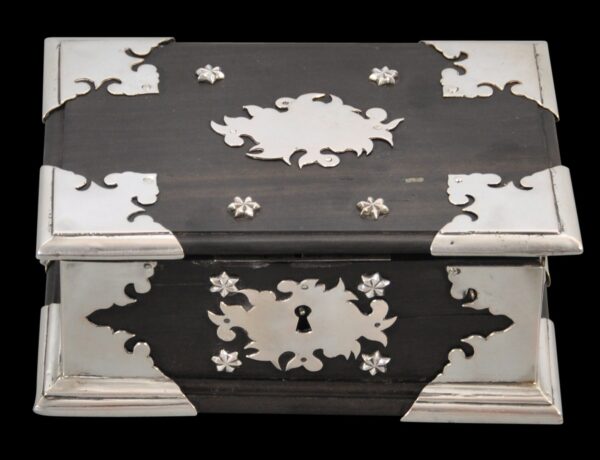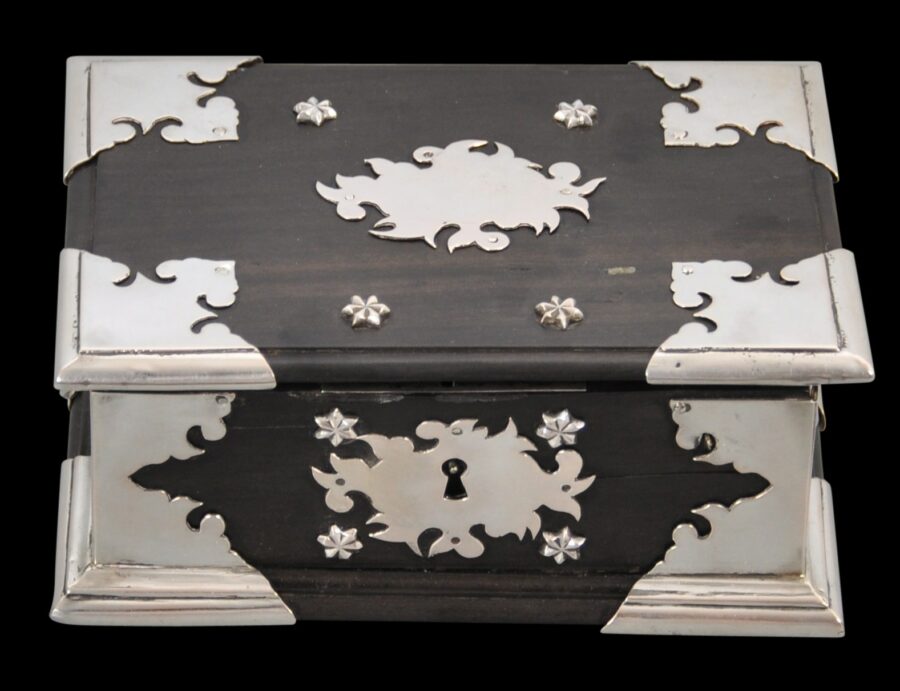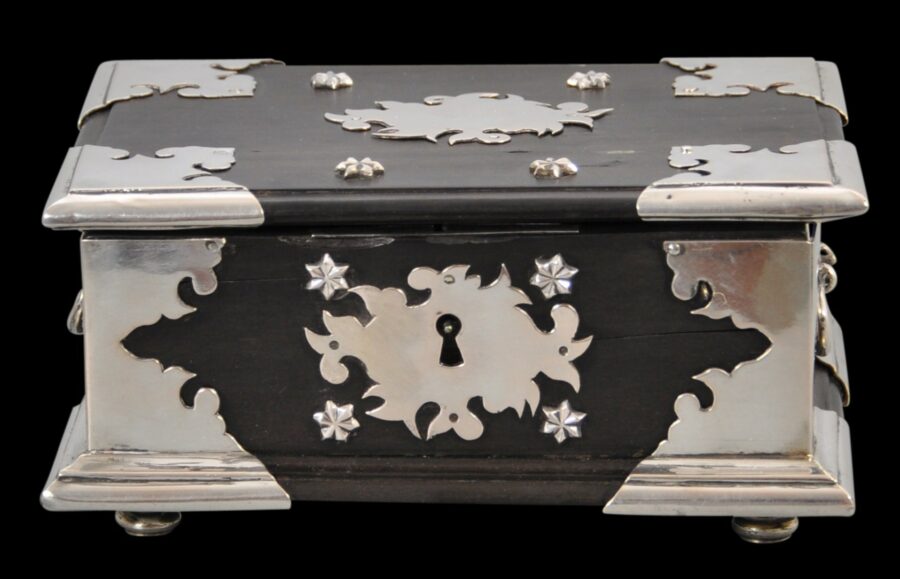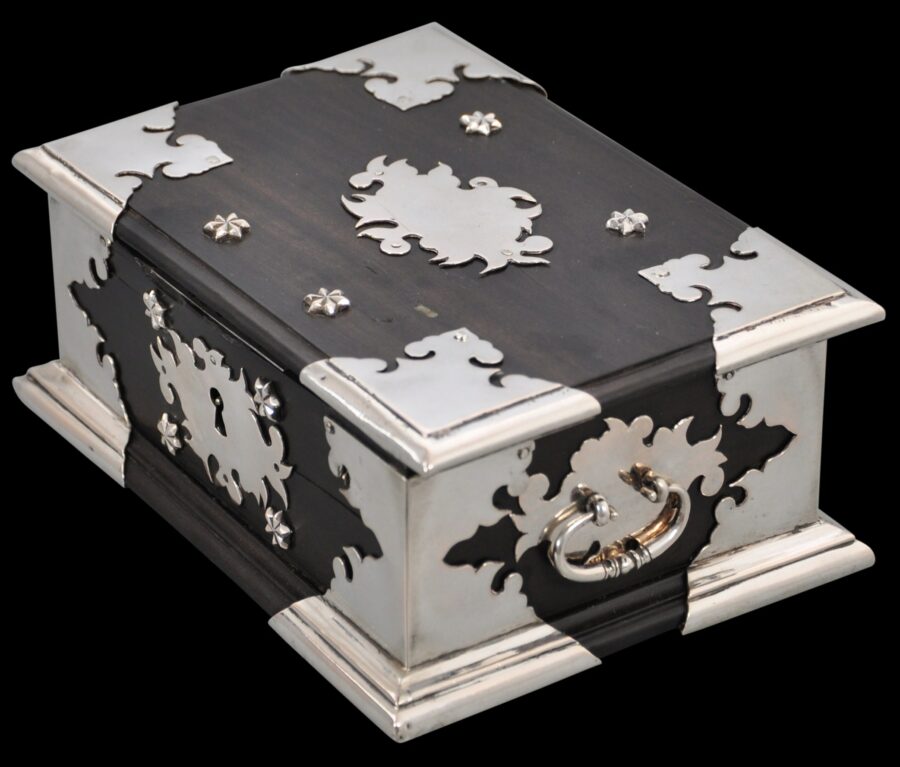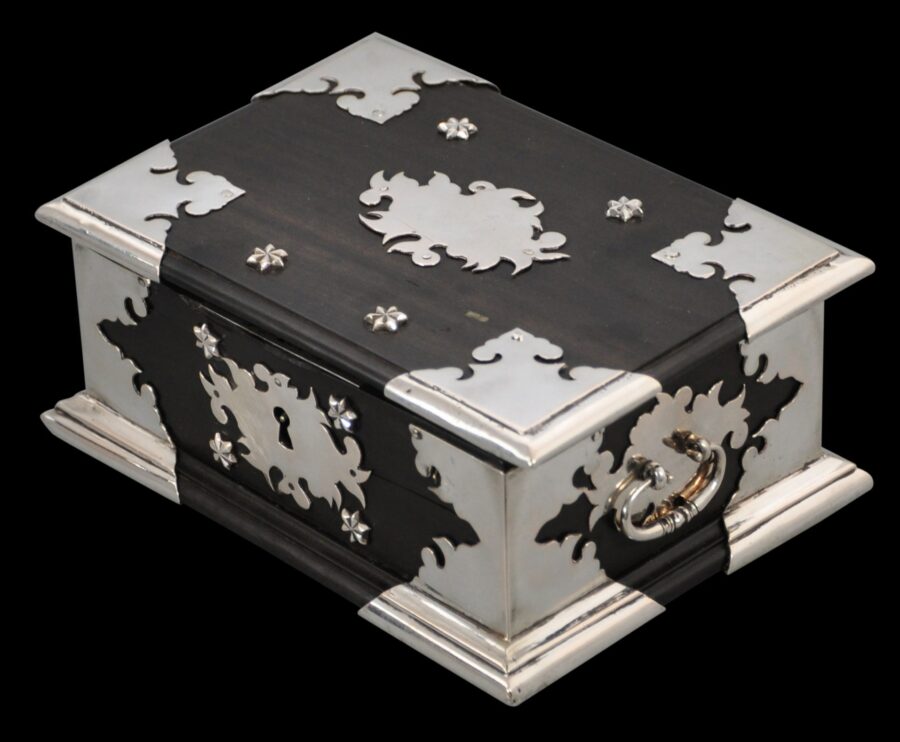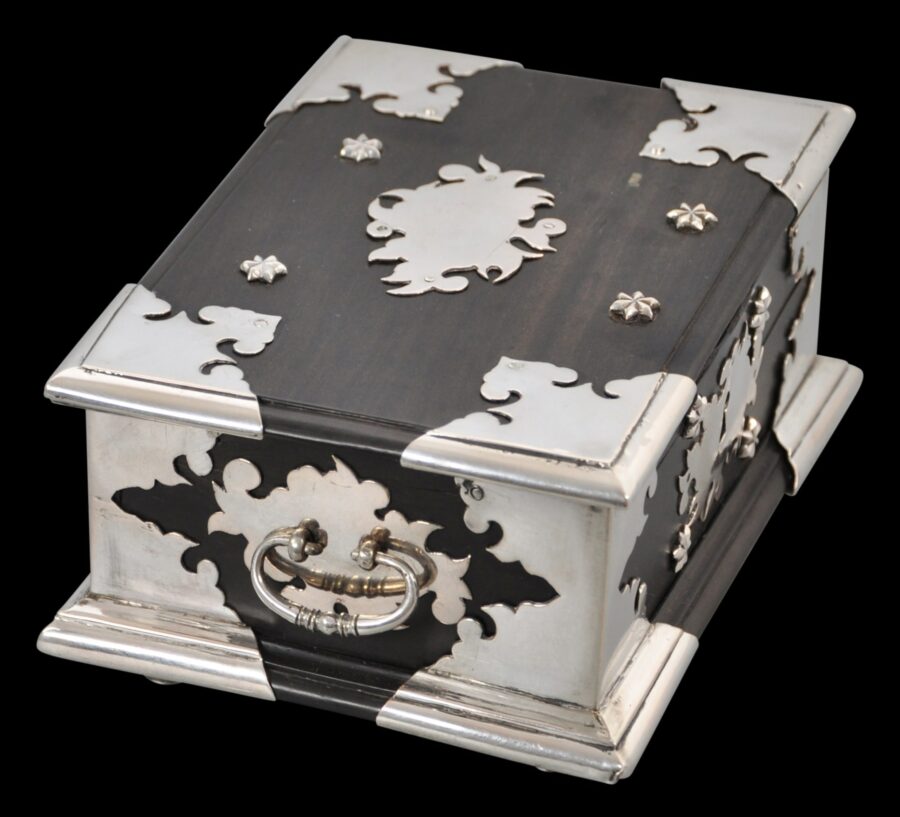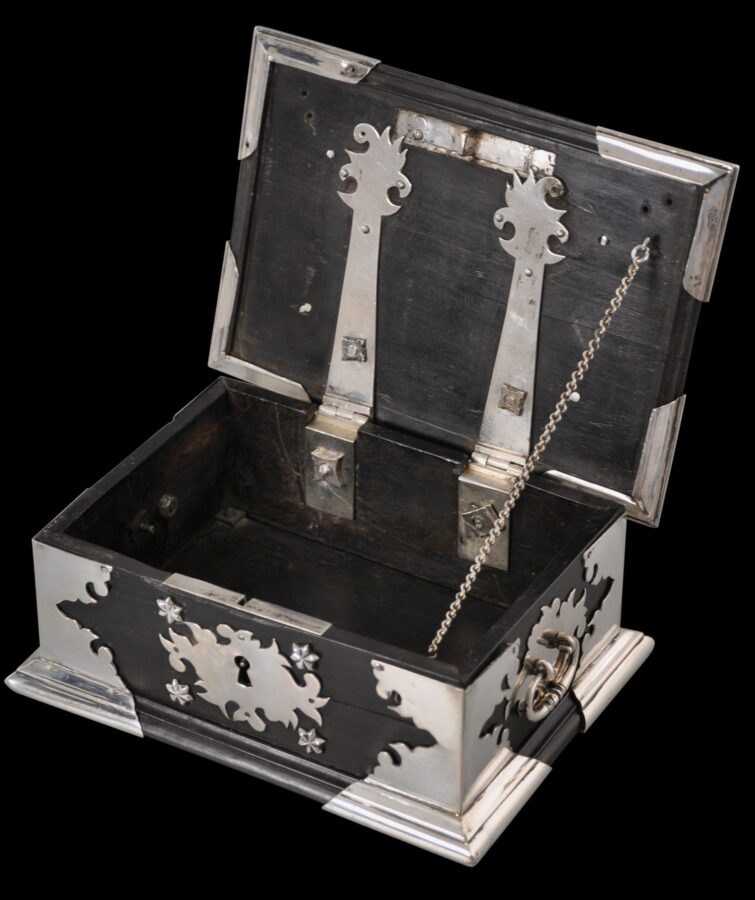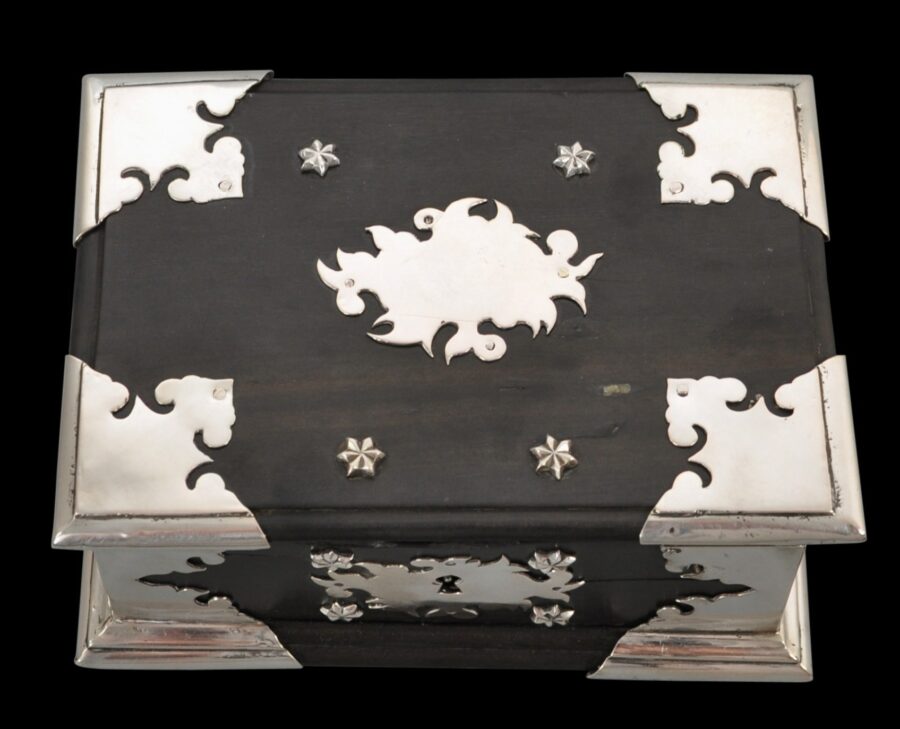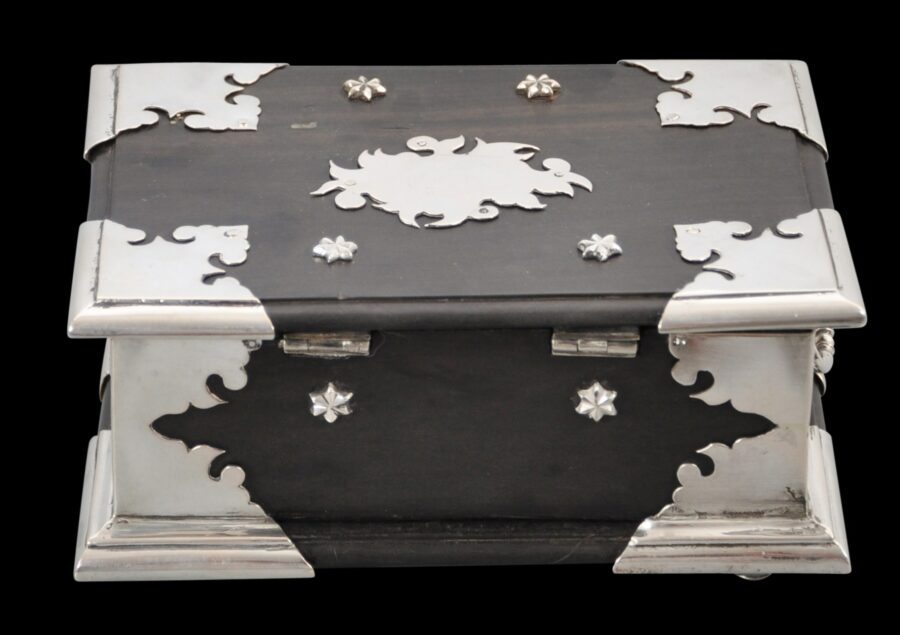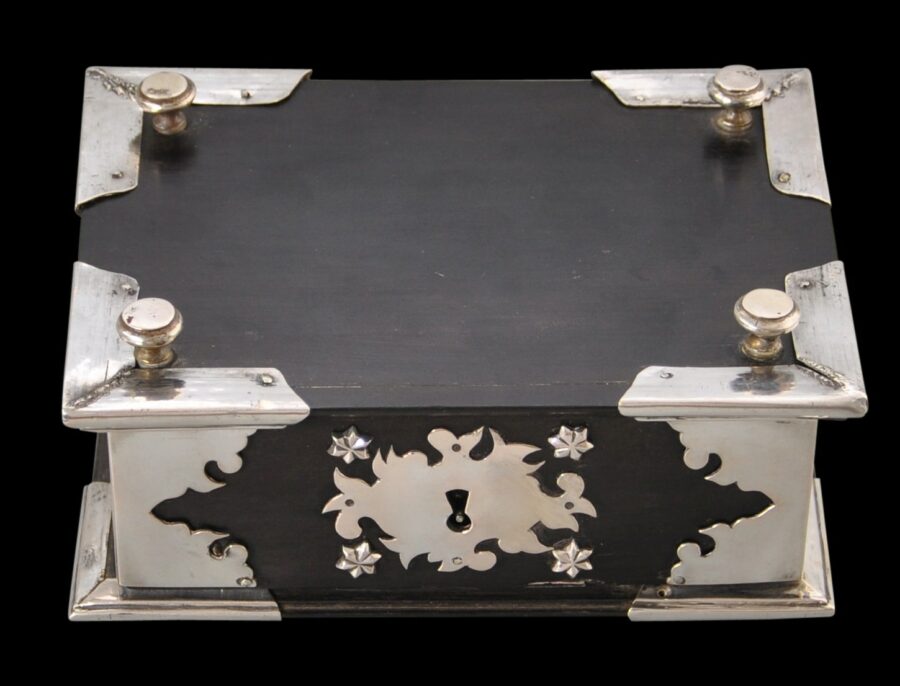Enquiry about object: 8608
Dutch Colonial Ebony & Silver Betel Box
Batavia, Dutch East Indies (Indonesia) first half of the 18th century
width: 14.8cm, height: 7cm, depth: 10.5cm, weight: 528g
Provenance
UK art market
This fine Dutch colonial betel or sirih box is from eighteenth century Batavia in the Dutch East Indies. It is smaller and perhaps more elegant than most extant examples.
It is composed of bevelled ebony with silver mounts. As such, the wood is very hard.
The silver corner mounts of the box and the silver key-plate are in the form of stylised clouds suggesting Chinese influence.
The box sits on four solid-cast flattened, spherical feet. The small bolts used in construction are hidden by elegant cast silver covers in the form of star anise seed pods. There are four on the front, four on the hinged cover, and two on the rear. Fine solid-cast ‘C’-form silver handles are attached to each side.
Prominent silver hinge flanges are attached to the inside of the box. These attach the lid or cover to the base. An interior silver chain also attaches the lid to the cover.
A very similar box, possibly by the same maker, is illustrated in Voskuil-Groenewegen (1998, p. 147).
The Javanese habit of chewing betel was adopted by the local Dutch and exquisite boxes to hold the nut, the betel leaf and the other accompaniments were commissioned by the Dutch. The Dutch realised early on how important betel was to the indigenous people and how it was an essential part of hospitality including with the indigenous rulers. They quickly incorporated betel use with their dealings with local elites. Paintings that show the wives of Dutchmen at the time often show betel boxes prominently displayed. One such seventeenth century painting by J.J. Coeman which today hangs in the Rijksmuseum shows Batavia’s Cornelia van Nieuwenroode with her husband Pieter Cnoll and two of their nine daughters, one of who is shown holding a jewelled betel box (Gelman Taylor, 2009, p. 42).
The fashion for luxurious betel accoutrements and other finery saw the governor-general in Batavia Jacob Mossel issue a decree in 1754 stating that only the wives and widows of the governor-general, the director-general, members of the Council of the Indies and president of the Justice Council were permitted to use gold or silver betel boxes adorned with precious stones, (Zandvlieyt, 2002, p. 206).
There are no apparent maker’s marks to the silver on this example. The box though clearly is of Batavian origin.
The box is in fine condition. There is now a slight gap between the lid and the rest of the box due to shrinkage over time but this is minor, and there are cracks to the ebony on the front of the box but these are stable. All the silverwork is present. There is a lock but no key. All the nuts are hand-cut.
References
Eliens, T.M., Silver from Batavia/Zilver uit Batavia, Gemeentemuseum Den Haag/W Books, 2012.
Krohn D.L. & P.N. Miller (eds.), Dutch New York Between East and West: The World of Margrieta van Varick, Bard Graduate Center/The New York Historical Society/Yale University Press, 2009.
Veenendaal, J., Furniture from Indonesia, Sri Lanka and India During the Dutch Period, Foundation Volkenkundig Museum Nusantara, 1985.
Veenendaal, J., Asian Art and the Dutch Taste, Waanders Uitgevers Zwolle, 2014.
Voskuil-Groenewegen, S.M. et al, Zilver uit de tijd van de Verenigde Oostindische Compagnie, Waanders Uitgevers, 1998.


